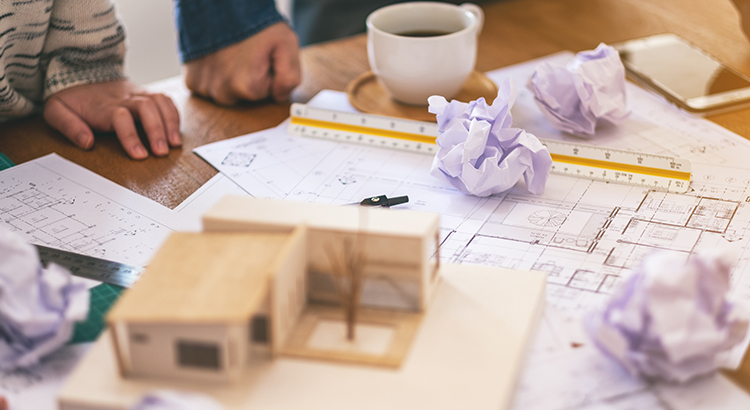As the population of Baby Boomers is at the peak of retirement age and with advances in healthcare helping the population of the United States live longer it is the desire of many seniors to “age in place.” According to the Senior Resource Guide, the term means,
“…that you will be remaining in your own home for the later years of your life; not moving into a smaller home, assisted living, or a retirement community etcetera.”
There is no doubt that there is an appeal and comfort in staying in a home you’ve lived in for many years instead of moving to a totally new or unfamiliar environment. There is, however, new information that suggests this might not be the best option for everyone. The familiarity of your current home is the main pro of aging in place, but the potential emotional and financial drawbacks to remodeling or renovating so you can stay in that home might actually be more costly emotionally and financially than the long-term benefits.
A recent report from the Joint Center for Housing Studies of Harvard University(JCHS) titled Housing America’s Older Adults explained,
“Given their high homeownership rates, most older adults live in single-family homes. Of the 24 million homeowners age 65 and over, fully 80 percent lived in detached single-family units…The majority of these homes are now at least 40 years old and therefore may present maintenance challenges for their owners.”
If you’re in this spot, 40 years ago (or even 15 or 20 years ago) you may have had a growing family. For that reason, you probably purchased a 4-bedroom home in a child-friendly neighborhood with good schools. It was a great choice for your family, and you still love that home and all the memories in those walls.
Today, your kids are likely grown and moved out, so you don’t need all of those bedrooms. Yard upkeep is probably very time consuming, too. You might be thinking about taking some equity out of your house and converting one of your bedrooms into a bigger master bathroom or better bathroom suite, and maybe you may want to convert another room into an open-space reading nook or yoga space. You might also be thinking about cutting back on lawn maintenance by changing the landscaping to less lawn and more maintenance-friendly planting, or you may be thinking about going big and installing a pool surrounded by beautiful paving stones.
It all sounds wonderful and it is your “forever home.” For the short term, you may really enjoy the new upgrades, but you’ll still may have to climb stairs to get to your bedroom or laundry, pay money each month to heat and cool your home that’s probably larger than what may actually you need. And you still need to continue fixing all the things that start to go wrong with a 40-year-old home like the roof, hot water heater, faucets, flooring, and other odds and ends that are now ready to start going out with age.
Last month, in their Retirement Report, Kiplinger addressed the point,
“Renovations are just a part of what you need to make aging in place work for you. While it’s typically less expensive to remain in your home than to pay for assisted living, that doesn’t mean it’s a slam dunk to stay put. You’ll still have a long to-do list. Just one example: You need to plan ahead for how you will manage maintenance and care—for your home, and for yourself.”
So, at some point, the time may come when you decide to sell the house anyway due to all the maintenance and hassles (death by a thousand cuts). This situation can pose a big challenge if you’ve already taken cash value out of your home and used it to do the type of remodeling mentioned above. Realistically, you may have inadvertently lowered the value of your home by doing things like reducing the number of bedrooms to give you what you wanted to age in place. The family moving into your neighborhood is probably similar to what your family was 40 years ago. They probably have young children, need the extra bedrooms, and they may be nervous about your awesome pool, or may want a big lawn so the kids and dog can play outside in the backyard.
Bottom Line
Before you spend the money to remodel or renovate your current house so you can age in place, let’s get together to determine if it is truly your best option. Making a move to a smaller home in the same neighborhood or closer to where your kids live might make the most sense.
As always, I’m asking the question, “How can I help you today?” Even if you are not planning a real estate purchase or sale soon, I want to help you in any way I can with your present situation. Check out our home value analysis for the specific possibilities on your home, and check out our recent Market Update for your area to give you a general look at what’s happening in your city.
I appreciate you looking us up, and letting us be your information source for anything you may have a question on or need help with. We love people, and we love properties. Just reach out and call us at (503) 799-8354 to get answers to your questions.
Cheers,
Michael Jester
Oregon Licensed Real Estate Broker
My Real Estate Advisor Team
(503) 799-8354 cell
(503) 437-9005 office
michaelj@myreateam.com
Bella Casa Real Estate Group
207 NE 19th Street, Suite 100
McMinnville, OR 97128
(503) 437-9005 office
https://thebellacasagroup.com

